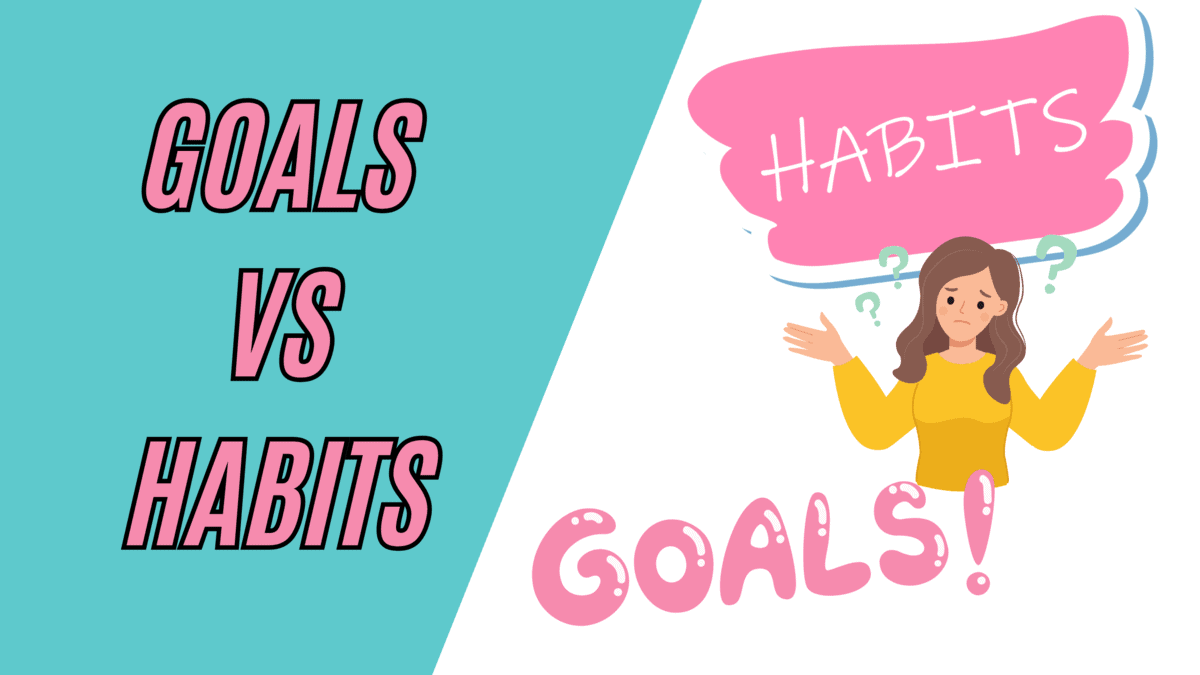Still think the 40-hour work week is the norm?
Thinking that you should be at your desk from 9-5 or you’re not really working full-time?
I’m here to tell you you’re wrong.
You can schedule your day as a freelancer however you want.
I mean, you still have to get sh*t done, but now you’ve got the freedom to make your own schedule.
The first thing I’ll to say here is that consistency trumps bursts of motivation.
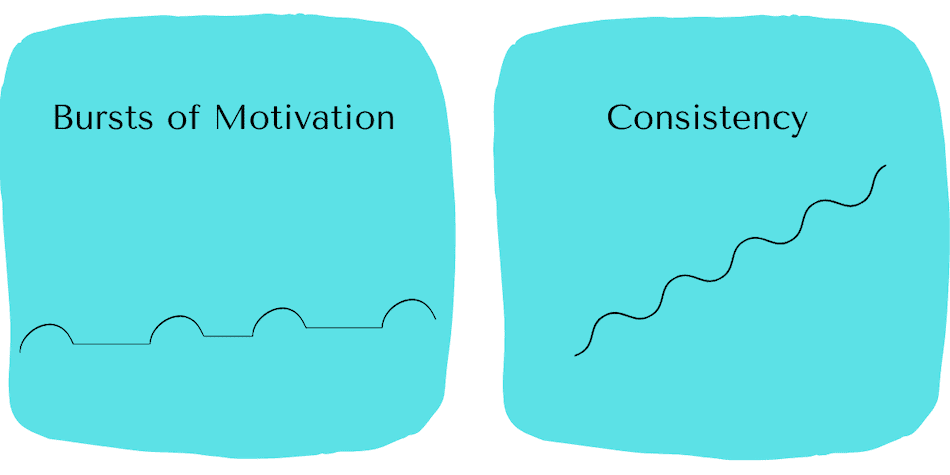
You won’t feel motivated all the time, we definitely don’t. But you’ve committed to making your business work which means staying consistent even when your motivation is nowhere to be seen.
So, how do you stay consistent when you’ve got what seems like unlimited freedom?
Scheduling.
So, let’s talk about how to make your own work schedule in 3 simple steps:
- Step #1: Start at the Top – Plan Your Week
- Step #2: Work Your Way Down – Plan Your Day
- Step #3: Work the Plan – Getting S**t Done
- Bonus Step #4: Review the work
Before we jump in, this article is aimed at full-time freelancers. If that’s not you, we’ve got side hustlers covered as well with our article on managing a full-time role and a freelance role.
Step #1: Start at the Top – Plan Your Week
If you don’t already have your mega weekly to-do list and top priorities in front of you, then take a step back and read this article on how to plan your week first.
Likewise, you can’t jump into your weekly plan effectively without knowing what your:
And of course, we’ve broken down how to set those priorities in this article.
Tip: I like to physically write down my lists. There’s something about writing down a task and ticking it off on paper (or my iPad to cut down on paper) that makes me more committed to finishing it. The physical planner I’m using right now is the yearly horizontal planner by Inspired Stories.
Step #2: Work Your Way Down – Plan Your Day
Now that you have your weekly plan set, it’s time to get down to the nitty-gritty of your daily plan.
We theme our days and spend time every Sunday (or Monday morning) prioritizing and allocating tasks for the whole week.
Especially when you’re working alongside someone else, things can change. A task might take longer than expected, or a potential client might have contacted you and you need to get on a call with them asap.
That’s why you should review your to-do list every morning and reprioritize before you get started for the day.
Personally, having my morning coffee whilst checking my emails and reprioritizing my to-dos for the day is the perfect start to get me in the right head space to start work.

How exactly do I organize my day as a freelancer?
This is what my calendar typically looks like as a full-time freelance copywriter, using time-blocking and theme days:
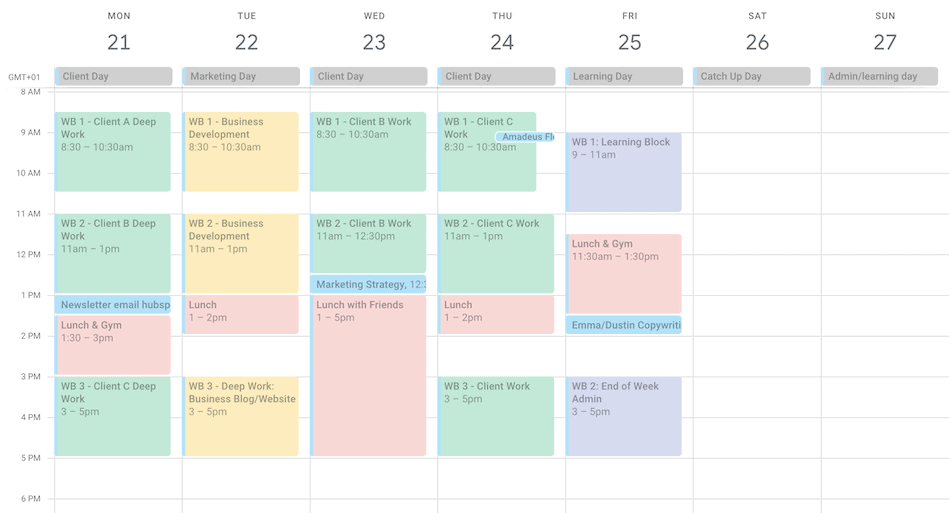
Every single day I will sit down before I start any work and check my to-do list against these criteria:
- Is everything I have in my calendar today prioritized correctly or is there something else more pressing?
- Does my plan for the day match my mood and creativity? I.e. should I move my creative work to earlier in the day if I’m feeling particularly inspired this morning?
- And most importantly: Do I have everything I need to do this work? The last thing you want is to get into a flow state only to put a halt on what you’re doing because you’re missing some super important information from a client or colleague.
If anything needs to change or be reprioritized then this is the time to do it.
The Rapid Planning Method is an optional approach to planning and prioritizing tasks for the day.
As you can tell from my calendar, I am the QUEEN 👸🏼of time blocking.
I split my work days into 3 lots of 2 hour windows. Generally 2 blocks in the morning and 1 block in the afternoon.
I find this gives me enough spare time in the day to have decent-sized breaks and actually feel refreshed after them, go to the gym, and get some housework done.
I officially start my day at 8:30 am but I review my tasks for the day before that and then simply start working my way through the list in priority order, moving my time blocks if needed.
What I NEVER do (unless its an actual emergency) is move my time blocks during the day. That’s key.
Reprioritise in the morning if you need to and then commit to your new plan.
Notice how I planned to take Wednesday afternoon off this week – because I could. That’s why I have Saturday and Sunday as “Catch-up” and “Admin/Learning” days as well. Yes managing my own schedule means I can take a weekday off when I want, but it also means working weekends when I need to so that I can move the needle on my big goals.
Now, we have a full article on freelancer time management techniques but here are 3 you should definitely consider when you’re structuring your day:
Capitalizing on Your High/Low Energy Hours
Being a freelancer gives you the freedom to work whenever you want – and we strongly believe that you should play this to your advantage.
Take the time to notice and learn when your high and low energy hours are and plan your days around them.
I’m a middle-of-the-day person. So unless I’m really up against it on a deadline, you’ll never catch me working at 7am. Whereas Connor can roll out of bed early and pick up his laptop within 5 minutes.
Plan your days to work on any deep and focused work during your high-energy hours and leave any low-concentration (admin, meetings etc.) to low energy hours.
Time Blocking
Time blocking is the process of breaking up a period of time, usually a day or a week into smaller segments or ‘blocks’. Each block is then allocated a specific task to be carried out in that segmented time block – just like I have on my calendar above.
Decide how long you want your blocks to be, how many blocks per day works for you, and allocate your daily to-do items to your blocks. (extra points if you use theme days on top of this).
Pomodoro Method
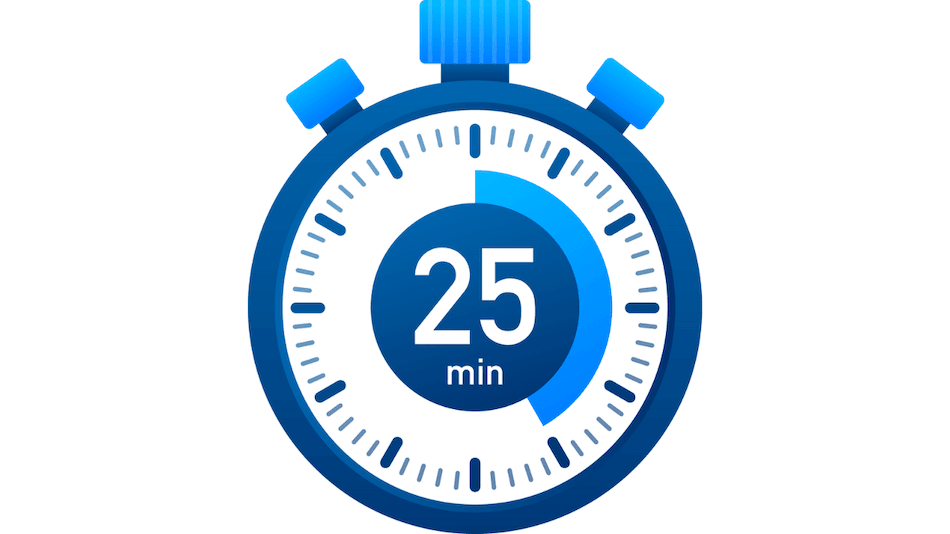
The Pomodoro Technique was invented by Mr Cirillo in an attempt to help him focus on a task. The aim is to resist distractions and focus for just 25 minutes, take a 5-minute break, and repeat.
Use an app like Tomato Timer or, find a Pomodoro playlist on Youtube/Spotify. Start the timer running and make a start on the highest priority on your daily to-do list.
Personally, this doesn’t work for me at all. I time block in 2-hour periods because this is the amount of time I can usually concentrate for. Taking breaks every 25 minutes just distracts me. But again, Connor is the complete opposite and loves this method. Check out his review of spending 1 week using the Pomodoro Technique and what it did for his productivity.
Step #3: Work the Plan – Getting S**t Done
Actually finishing the work you’ve plan is the most important part of planning.
This is where that word we all love – consistency – comes in. You have to follow through on your plans to actually see results and achieve your goals.
We’ve given you the techniques we use to successfully run our business but the rest is up to you.
You’ve got the tools to plan your week and your days, sp now it’s time to get to work (and stop reading articles online).
Bonus Step #4: Review Your Work
When you’re new to working for yourself and start planning out your workweek you’ll quickly realize that you’re bad at it.
Like really bad at it.
We definitely were – overcommitting to deadlines and working until 12pm, writing impossible to-do lists, and setting unrealistic goals.
This was what my calendar looked like most of the time in 2021:
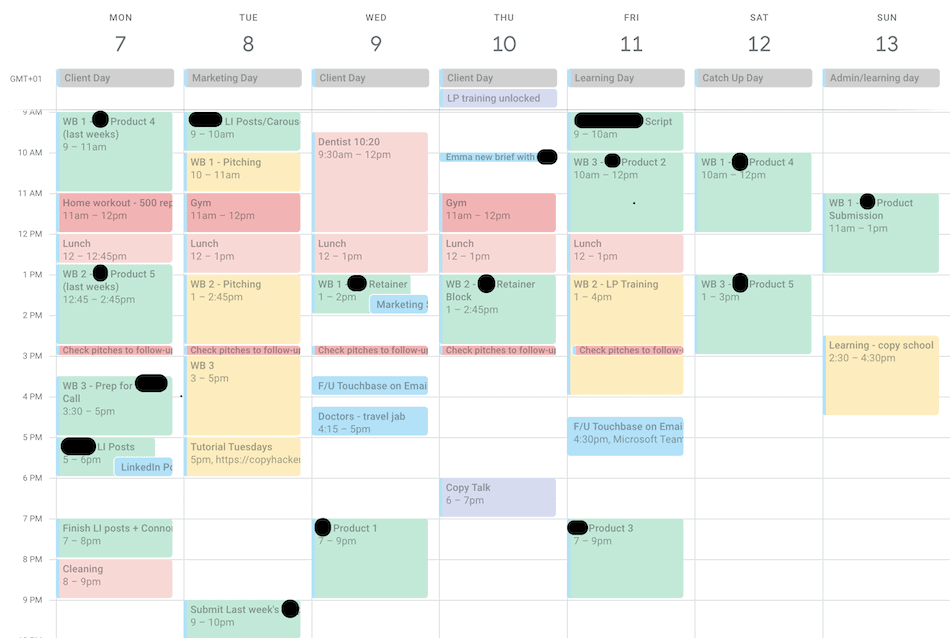
Yes, you’re reading it right. That’s client work scheduled every day of the week at all hours.
It was a HOT MESS 🔥
There’s a difficult mindset shift to go through when you swap from a 40-hour office job to working for yourself and realizing you don’t need to sit at your desk all day, every day. In fact, I’d even argue it has a negative effect on your work.
I mean, the average office worker only works productively for around 3 hours a day out of their 8-hour workday.
So, how do you stop this from happening?
Every week, review your actual work output against what you had planned. I like to sit down every Sunday before I do my next week’s plan and go over what I accomplished the previous week compared to what I had scheduled.
By reviewing what you achieved compared to your plan and how long each task took you, you’re preparing yourself to plan your time more efficiently every single week. That’s why we also recommend you use a time tracker, at least at the beginning, so you know exactly where your hours are going.
Freelance Schedule Template
One thing to take away from this post is that not every person or business is the same. We run an SEO and copywriting agency, so what works for me might not work for you.
So, use this template as a jumping-off point to start filling in your own freelancer schedule.



